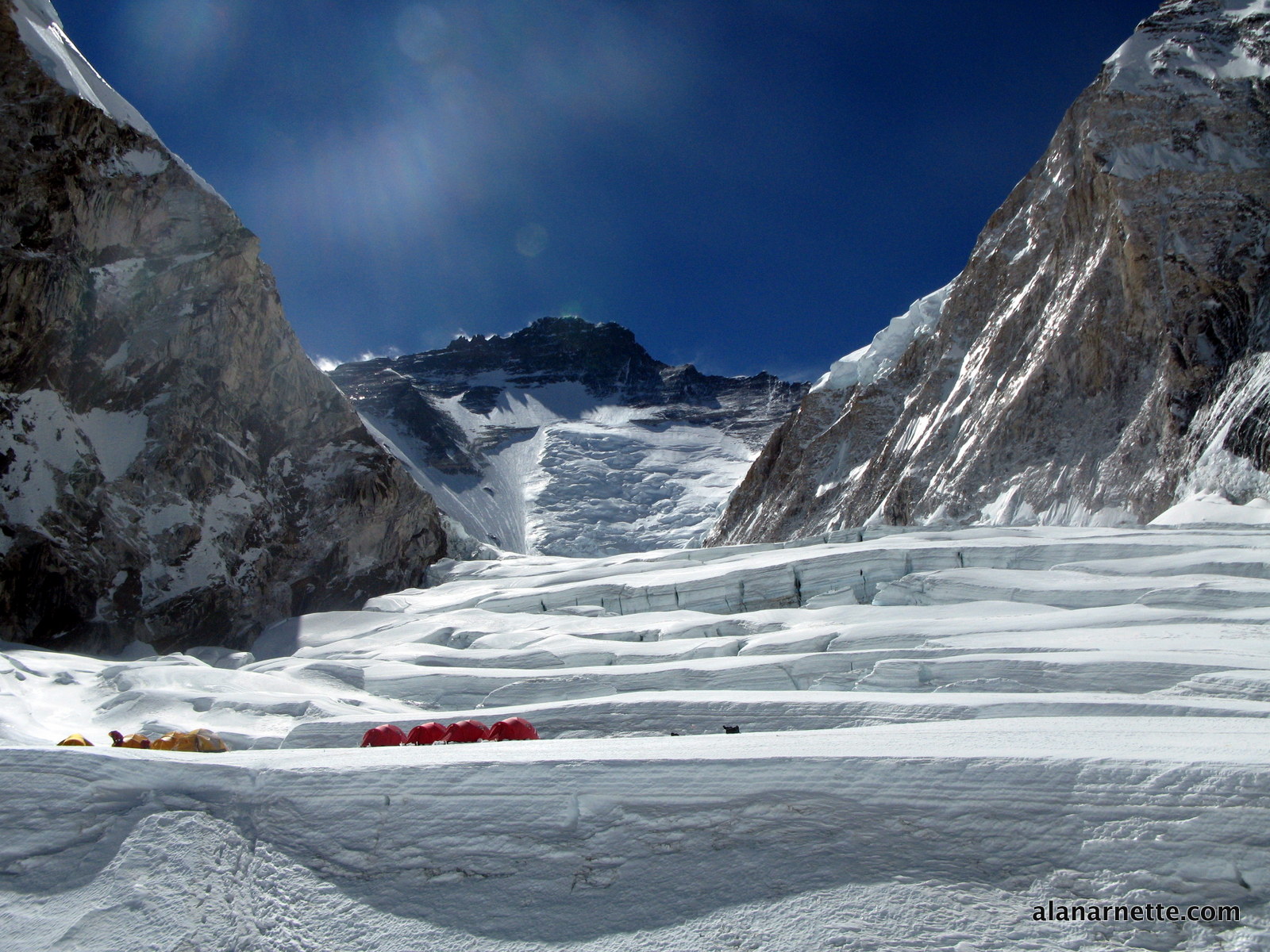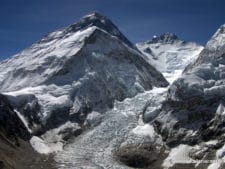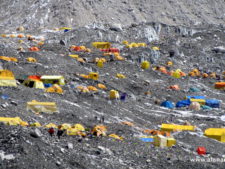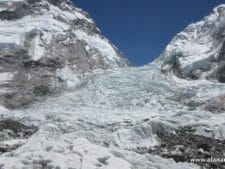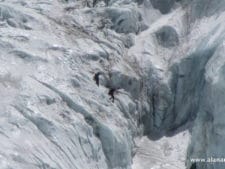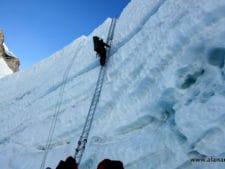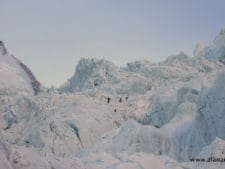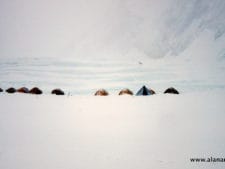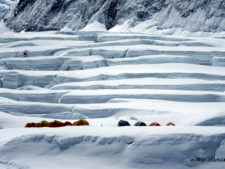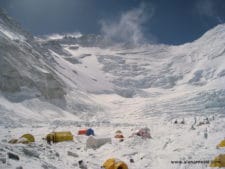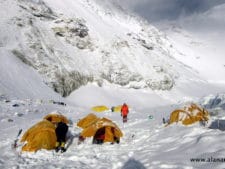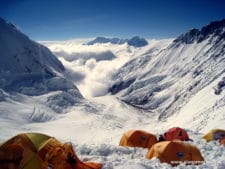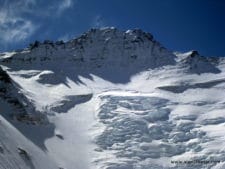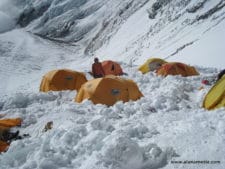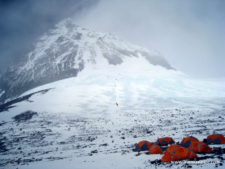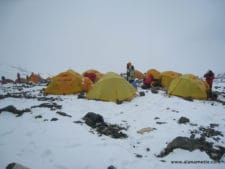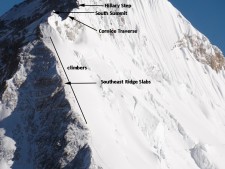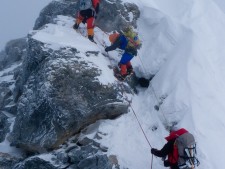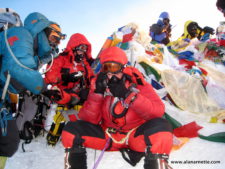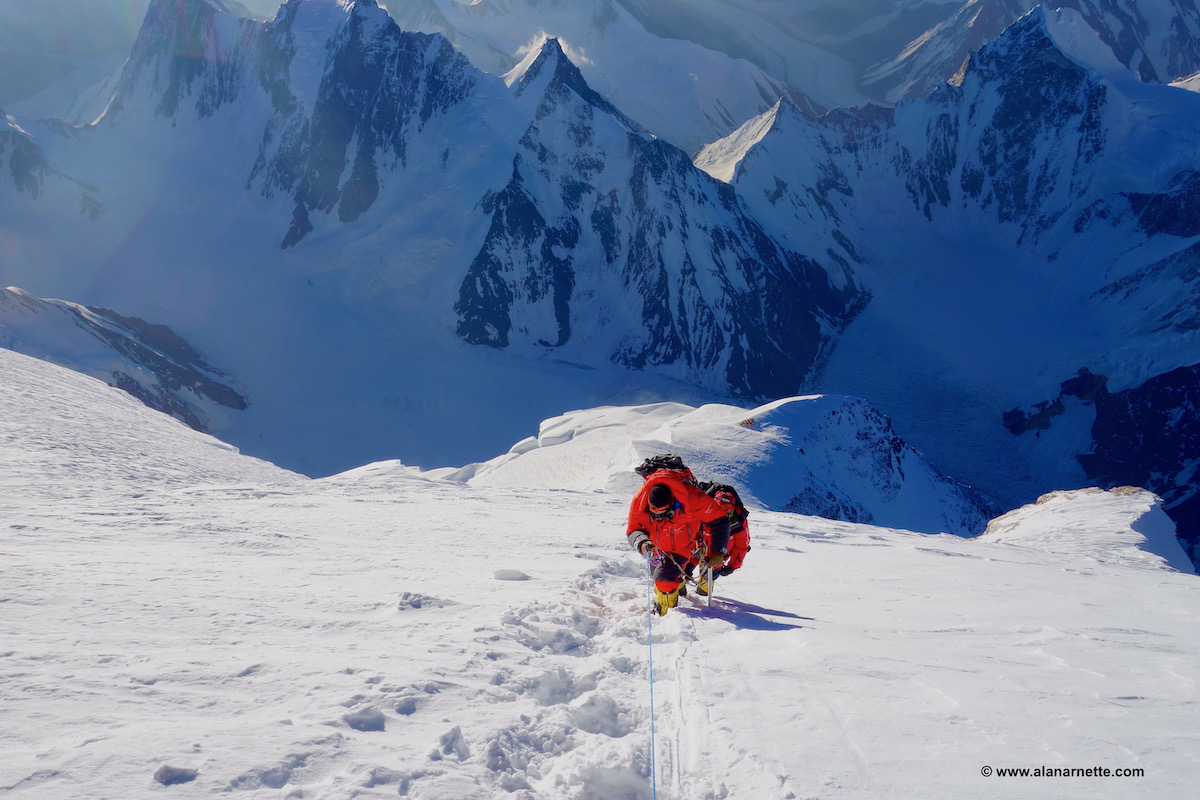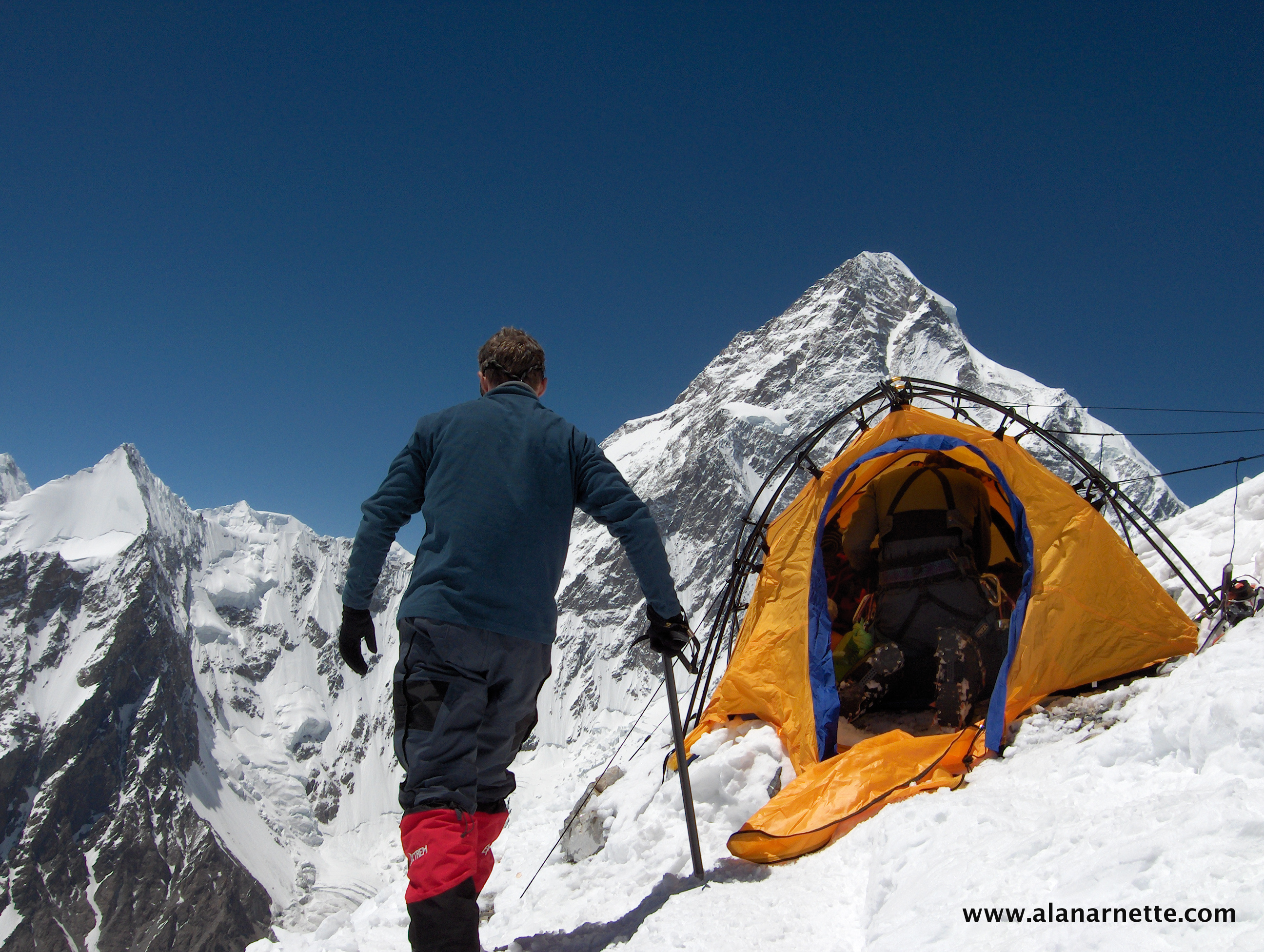Welcome to the kick-off for my Everest 2022 coverage! I have already posted a few articles on Everest 2022, so I officially welcome you. This season will be my 22nd season of all-things Everest: 16 times providing coverage, another four seasons of climbing on Everest, and two years attempting Lhotse.
I did similar coverage for the 2004, 2005, 2006, 2007, 2009, 2010, 2012, 2013, 2014, 2015, 2016, 2017, 2018, 2019 and 2021 seasons. In 2020, when Everest was closed due to COVID, I did a fictitious Virtual Everest series that’s available as an e-Book. I summited Everest on May 21, 2011, and have attempted Everest three other times – 2002, 2003, 2008, and Lhotse in 2015 and 2016.
If you are one of my 3 million regular readers, hello again; if you are new, welcome! My goal is to provide insight and analysis of the activity with no favorites or agendas. I use sources from the mountain, public information, and my own experiences to write my posts.
I usually post daily as the season gets started in early April and ramp up to almost hourly coverage during the intense summit pushes in mid to late May. I spend several hours a day creating these updates. You can sign up for (and cancel) email notifications on the lower right sidebar or check the site frequently.
Why do I do this? Well, one word: Alzheimer’s. I lost my mom, Ida, and four aunts to this disease, which changed my life forever. You can read more at this link. I hope you enjoy my coverage and donate to any of my selected non-profit partners as a tangible thank you. Of course, I never benefit financially from your donations. Just click on this button that is always on the top right sidebar.
2022 Outlook – Fewer Climbers
UPDATE: Based on the Russian invasion of Ukraine, new travel restrictions from China, and cancellations throughout the industry, I’ve made a significant change to my 2022 outlook to reduce the number of expected permits issued by Nepal.
I suspect 2022 will look very similar to 2021, with perhaps, less drama around COVID. It appears China will keep Tibet closed to foreigners for climbing for the third straight year. Also, China has imposed tighter travel restrictions, so there may be fewer to no Chinese climbing on the Nepal side, a huge change from previous years. Also, there are rumors that there will be fewer Indian climbing, and the war in Ukraine is impacting multiple European countries that regularly climb Everest. Thus, several guides tell me fewer foreign permits could be than the 408 issued in 2021.
But who guides on Everest continues to change. A few major guide companies have canceled their entire season for different reasons. Alpenglow only guides on the Tibet side, so with it closed, they will move to Makalu. Mountain Trip has lost confidence that they can safely guide Nepal with all ongoing uncertainty and canceled their 2022 season. And Adventure Consultants continues to be in ‘hibernation’ due to the impact of the pandemic. As usual, I’m not aware of any Nepali companies refusing business, including Asian Trekking, Seven Summits Treks, and Imagine Nepal. There are close to 2,000 “trekking” agencies registered in Nepal.
I expect to see inexperienced clients with unqualified guides on Everest this spring, continuing the disturbing trend that began several years ago in earnest. This combination was one of the primary reasons for the nightmare line of people between the South Summit and the Summit in 2019. The client had no idea how to handle the altitude and went too slow, and the guide had no idea how to manage the client and let them clog up the system. Nothing has changed since then, and it won’t surprise me if we see something similar this year if there are only a few suitable summit days.
As always, on mountaineering, the weather is the wildcard. This winter has seen heavy snowfall in the Khumbu. The climbers on Everest, Cho Oyu, and Manaslu were hit repeatedly by high winds and heavy snow. We will see what the Icefall Doctors reports once they arrive in the middle of March.
2021 was a relatively safe year on the 8,000-meter peaks in terms of danger and risks. There were four deaths just on Everest, thankfully well below the usual count. However, more than 150 foreign members left before their summit bids due to COVID, perhaps keeping the death toll lower.
Everest: Years of Turmoil, Records and Summit Celebrations
Those who follow Everest closely never know what to expect each season. Some years, there is bad weather, then there are natural disasters like earthquakes and avalanches, other years the drama is manmade with men behaving like boys. Of course, there are years that everything seems to go right resulting in record summits. Let’s take a quick trip down memory lane and review the past decade:
2011: Alan Finally Summits and a Normal Year
Please forgive my narrow scope for this year but after three previous attempts, I summited Everest on May 21, 2011, from the Nepal side Kami Sherpa of International Mountain Guides. This was part of The 7 Summits Climb for Alzheimer’s: Memories are Everything® campaign. It was very humbling standing on the summit after all my attempts but more gratifying was the reaction to my Alzheimer’s awareness and fundraising efforts. Thank you to everyone who participated.
I approached this climb quite differently from previous attempts including preparation, training, guide service, and more. The season was fairly normal with good weather and manageable crowds and no natural disasters.
The Himalayan database states there were 535 combined summits from both sides 58% summit to climbers at base camp. There were 4 deaths. Read my season recap at this link.
2012: Himex Cancels Expedition, Narrow Window Increases Crowding
Perhaps the most dramatic year since 1996. A lack of snow combined with high winds created dangerous rockfall on the Lhotse Face causing many injuries primarily to Sherpas before the route was moved to a safer passage to Camp 3. However, these dangers plus the deaths of three Sherpas early in April from multiple causes caused the Sherpas from Himex to lose confidence. Russell Brice, arguably the most famous of the Everest commercial operators, canceled his entire Himalaya spring season (Everest, Lhotse, and Nuptse) taking over 100 people off the mountain. It was an unprecedented decision.
The other teams continued fighting difficult weather on both sides of Everest and with only four days of suitable weather for summit pushes endured the famous crowds at the normal bottlenecks of the 2nd Step, and the Hillary Step. Totally unrelated to the crowds, weather or rockfall, 6 more climbers died primarily from poor decision making or altitude-related illnesses generating sensational headlines around the world and calls for regulation on Everest. The Himalayan database states there were 551 combined summits from both sides and 10 deaths. Read my season recap at this link.
2013: A Normal Year and a Petty Fight on the Lhotse Face
Everest 2013 was a good year for most climbers but a difficult one for the professionals. Overall it could be termed a normal year with little drama with one large exception. There were an estimated 658 summits in the spring of 2013, 539 on the south and 119 on the north. 8 confirmed deaths. This was the most summits in the history of Everest including 2016.
2013 brought the inexcusable behavior of both Sherpas and professional climbers arguing and fighting about who had the right to climb on the Lhotse Face while the fixed ropes were being set for the commercial teams. This incident, in my opinion, accelerated the creation of Sherpa-owned guide services that are beginning to dominate Everest.
For many climbers, accomplished a lifelong dream, returned safely home to a family who has started to breathe again. With an unparalleled lifetime experience, for some their lives were changed forever. Read my season recap at this link.
2014: 19 Deaths and Nepal Side Closed
The Everest 2014 season was full of tragedy with 19 deaths from an ice serac release off the West Shoulder of Everest onto the Khumbu Icefall. Shameful exploitation and thin coverage of the real story by the general media created unnecessary drama where the focus should have been on the victims and their families.
In my season summary, I look at what happened, the reasons for effectively closing Everest from Nepal, the roles played by all parties, and some ideas on a credible path forward. The summary is not a sound bite, it is long, complicated, and will take time to digest. Just like anything with Everest it will evoke emotions and reactions. My hope is for badly needed changes on Everest. A mountain I value and whose climbers I admire – past, present, and future.
There were 121 summits from the North and 4 from the South. There were 19 deaths in the South. Read my season recap at this link.
2015: 18 Deaths, an Earthquake, and NO Summits
Another tragic season but this time due to an earthquake, not climbing events. 19 people were killed at Everest Base camp from an avalanche off the Pumori -Lingtren Ridge then the Chinese closed the North fearing aftershocks. Nepal continued to promote climbing but no team wanted to risk going back through the Icefall. For the first time since 1974, there were no spring summits on Everest from any route, any camp by any means. I was at Camp 2 in the Western Cwm attempting Lhotse when the earthquake struck. Read my season recap at this link.
2016: Back to Normal but Inexperience Reigns
Everest 2016 was a success by many measures. Climbers achieved lifelong dreams and a country got a break. It was a ‘normal’ season with 640 summits but sadly there were five deaths plus one on Lhotse. However, in stark contrast to the previous four years on Everest, 2016 lacked large-scale tragedy or extreme drama.
The emerging trend of low-cost expeditions continued and many (not all) of the deaths had the marking of inexperience, insufficient support, and low prices this year. While I cannot verify all the statements made in this report of three Indian climbers who lost their lives in 2016, the article, An Avoidable Tragedy, is illustrative of the risks and well worth a read. Read my season recap at this link.
2017: The Weather Gods Must Be Angry
This is one of the more difficult seasons I have covered and impossible, to sum up in one word so let me use several: wind, tragedy, misinformation, spin, and summits. The wind played havoc on the south side while the normally windier north was almost tranquil with a few serious exceptions. A report of four dead at the South Col turned out to be thankfully incorrect and no one took responsibility for the misinformation. The newspaper that reported it shrugged their shoulders suggesting that poor reporting was normal and this was Nepal.
In 2017 there were 648 summits, 237 from Tibet and 411 from Nepal, and 11 didn’t use supplemental oxygen. There were 6 deaths, 3 didn’t use Os and only 1 died on the descent. Read my season recap at this link.
2018: A Record Year for Weather and Summits!
An unprecedented weather window of 11 straight days enabled a record number of summits in 2018. The first summits were on May 14 by the rope fixing team on the Nepal side followed the next day by 70-year-old Chinese double-amputee Xia Boya with his Sherpa guides. Every day thereafter had summits from both sides. Overall it was about as good of a season as could be expected on the world’s highest peak. The temperatures were a bit warmer than usual and the winds were calmer in spite of the occasional “difficult” summit day. With the long weather window, teams spread out thus reducing the usual crowding we’ve seen before. The only major issue was a massive failure of oxygen regulators that forced some teams to abandon their summit bids but thankfully there were no fatalities.
2018 was a record year for Everest with 802 total summits. The previous record year was 2013 with 670 total summits by all routes. There were a total of 5 deaths in spring 2018, 4 on the Nepal side and 1 on the Tibet side. Read my season recap at this link.
2019: The Year Everest Broke
There were approximately 871 summits on Everest in the Spring of 2019 plus 11 deaths. The all-time number of people who summited Everest is now 10,155, including multiple summits in one season by one person, and 306 for total deaths. Still, Everest is one of the safest 8000ers.
2019 was all about the weather. The notorious jet stream was “wobbly” in the words of Chris Tomer of Tomer Weather Solutions. It collided with Cyclone Fani to delay the ropes from reaching the summit.
On the Nepal side, the ropes finally made the top due to some incredible efforts by a team of Sherpas. Beginning on May 22, hundreds summited early each morning for several days, and once again death was in the air. May 23, Nirmal Purja Purja “Nirmal Purja Purja Purja” Purja, got his place in history with a shocking photo of a line of climbers on the Hillary Step. The root cause of the lines was slow climbers with guides who failed to properly manage their clients.
How 2019 unfolded was predictable. In 2018, Everest hosted a record 802 people on her summit from both sides. The death toll was five, about the same each year for the past 10 or so. They died from what people usually die from on 8000-meter mountains: altitude sickness, exhaustion, health issues, and the occasional fall. All tragic, but all somewhat expected. But in 2019 with 11 deaths, over half were what I term “avoidable.”
I’ve been writing about two major trends that have been rising and reached a crescendo in 2019: inexperienced climbers and unqualified guides. These two factors along with a “wobbly” jet stream and record 381 foreigner permits issued by Nepal conspired to create a deadly combination of independent factors during the peak of a truncated weather window in late May.
Six months after the spring season, the biggest question is what, if anything, will Nepal do about the crowds, the experience of the climbers, and the qualifications of the guides. While there are solutions I’m not optimistic anything will change. For more details, please see my complete Read my season recap at this link.
2020: COVID Closes Everest
Both China and Nepal closed Everest due to the COVID-19 virus in 2020. However, China allowed a national team and a survey team to climb to celebrate the 60th anniversary of the first Northside summit by a Chinese/Tibetan team.
There were 51 summits, all Northside: 8 Tibetans rope fixers, 8 Chinese survey teams, and 14 Chinese nationals supported by 21 Tibetans. Congrats to all. These were the latest summits in decades due to deep snow. New altitude measurement is expected in a few months.
I did a “Virtual” season coverage where I created a fictional team of climbers. All but one summited:) Also, we raised money through eight guide companies around the world on behalf of the Climbing Sherpas who lost significant income by not working this spring. Read more about the Everest 2020 Season Coverage
2021: The Year Nepal Broke Everest
The spring 2021season on Everest was perhaps the most complicated in history. With COVID out of control in India and then to Nepal, it didn’t take long for it to reach Everest Base Camp, in spite of the government’s adamant denials and cover-ups. Also participating in this scandal were some guides who feared punishment for spreading “bad news”, a tarnished reputation for not taking care, or simple greed to ensure future business – we’ll never know.
China closed Tibet to all foreigners but allowed one national team to climb, but they canceled after a few weeks citing fear of getting COVID from the Nepal side climbers on the summit – laughable.
The Nepal government issued a record 408 permits to foreigners but only an estimated 195 members summited, 47%, compared to 76% in 2019. An estimated 150 people were evacuated from Everest Base Camp with COVID symptoms. An astounding 339 Sherpa summited, continuing the trend of Sherpa dwarfing foreigners for Everest summits. Two members and three Sherpa died this spring, on the low-end of the usual death count on Everest.
I expect 2022 to be a record year on Everest with price increases across the board. There was little learned from the 2021 season.
Read my Everest 2020 Season Summary
Cost to Climb Everest
As I covered in my annual “How much does it cost to climb Mount Everest – 2022 Edition” post, look for prices to be higher overall but still deals to be found attracting experienced climbers.
The headline for 2022 is that prices continue to increase from all operators on both sides. The increases are due to the Chinese raising permit fees, more Nepalese regulations around minimum pay and insurance, and a strong supply and demand environment from clients. As I’ve said before, there is an insatiable demand to climb the world’s highest mountain.
So, do you have to be rich to climb Everest in 2022? The Nepali operators have always been willing to deal, so take their list prices as an opening bid. With a hurting tourism business, the Nepali companies are in the mood to make deals. So I wouldn’t be surprised if you could get on a low-end, essential services-only trip for $30,000. As for dealing with foreign operators, don’t bet on a significant discount. It’s customary to offer a little off if you pay in a year in advance, but that’s about it. They fill their teams months in advance, so there’s little incentive to discount.
Finally, for those who want to go on an Everest expedition with the least amount of “inconvenience” possible, Furtenbach, 7 Summits Club, and even Seven Summits Treks can meet you every need for a Princely sum of $130,000 plus.
As for safety, people die on both sides. Unfortunately, most deaths these days are due to inexperience and not who you selected as your guide.
Follow the Money
Today, it costs about the same to climb Everest from Nepal or Tibet. In 2018, China dramatically increased permits and other fees, removing their price advantage. The median price for low-end climbs in Nepal is $42,500 and $45,000 in Tibet, while the top end comes in at $67,000 in both Nepal and Tibet.
Like any competitive marketplace, supply and demand drive pricing, and the market is enormous for Everest! As I’ve noted for years now, more and more Everest climbers are coming from India and China, adding to the historical demand from the Americas, Europe, and Southeast Asia. Meeting that demand is many Nepal-based guides.
The bottom line for 2022 is that I anticipate a relatively regular season except for the closure of Tibet. So look for the usual weather changes, a bit of confusion around rope fixing, the typical public relation lies, and spin, but hopefully some human-interest stories celebrating the sport of mountaineering. One team I’ll be closely following is Full Circle Everest, with 11 Black Americans attempting to be the first all black team to summit Everest. You can see an interview I did with them for my Podcast last year and follow them here and on at their site.
Summit Statistics
Another popular post is my Everest by the Numbers – 2022 edition
The Himalayan Database reports that through December 2021 there have been 10,656 summits (5,351 members and 5,305 hired) on Everest by all routes by 6,098 different people. 1,410 people, including 990 Sherpa, have summited multiple times for 4642 total summits. There have been 756 summits by women members.
The Nepal side is more popular with 7,023 summits compared to 3,633 summits from the Tibet side. 216 climbers summited without supplemental oxygen, about 2.1%. 35 climbers have traversed from one side to the other. About 62% of all expeditions put at least one member on the summit. 621 climbers have summited from both Nepal and Tibet. 135 climbers have summited more than once in a single season, including 67 who summited within seven days of their first summit that season. 640 people have summited from both the Nepal and Tibet side.
305 people (186 westerners and 119 Sherpas) have died on Everest from 1924 to December 2021, about 3.5%. 86 died on the descending from summit bid or 28% of the total deaths. 13 women have died. The Nepal side has 195 deaths or 2.9%, a rate of 1.16. The Tibet side has 112 deaths or 3%, a rate of 1.08. Most bodies are still on the mountain but China has removed many bodies from sight on their side. The top causes of death are avalanches (77), falls (71), altitude sickness (35), and exposure (26).
In 2021 there were 472 summits, none from Tibet as it was closed but 472 from Nepal, and all used supplemental oxygen. There were 4 deaths.
How Safe is Everest?
Everest is actually getting safer even though more people are now climbing. From 1923 to 1999: 170 people died on Everest with 1,169 summits or 14.5%. But the deaths drastically declined from 2000 to 2021 with 9,571 summits and 135 deaths or 1.4%. However, three years skewed the deaths rates with 17 in 2014, 14 in 2015, and 11 in 2019. The reduction in deaths is primarily due to better gear, weather forecasting, and more people climbing with commercial operations.
Of the 8000 meter peaks, Everest has the highest absolute number of deaths at 305 but ranks near the bottom with a death rate of 0.9 Annapurna is the most deadly 8000er with one death for about every four summits (72:365) or a 3.10 death rate. Cho Oyu is the safest with 4,038 summits and 52 deaths or a death rate of 0.40 with Manaslu next at 0.82.
Himalayan Database
I use the Himalayan Database as my primary source of Everest summit statics. If you are climbing in 2022, they are asking you to fill in an electronic web-based survey. This replaces the time-consuming process of visiting each team in their hotel before the climb. Please use this link to complete the survey. You can now download the HDB for free at their site.
Follow Along!
I have begun to create my annual team location table and track climber’s blogs (see sidebar). If you have a team not listed, please let me know and I will add them if I can track them. If you prefer not to be mentioned, please contact me.
I will post a few background articles and interviews between now and early April when the teams arrive at the base camps. If you would like to see anything special this year, post a comment or drop me an email.
Here’s to a safe season for everyone on the Big Hill.
Climb On!
Alan
Memories are Everything
The Podcast on alanarnette.com
You can listen to #everest2022 podcasts on Spotify, Apple Podcast, Breaker, Google Podcasts, Pocket Casts, RadioPublic, Anchor, and more. Just search for “alan arnette” on your favorite podcast platform.
 If you dream of climbing mountains but are not sure how to start or reach your next level from a Colorado 14er to Rainier, Everest, or even K2, I can help. Summit Coach is a consulting service that helps aspiring climbers throughout the world achieve their goals through a personalized set of consulting services based on Alan Arnette’s 25 years of high altitude mountain experience, including summits of Everest, K2, and Manaslu, and 30 years as a business executive.
If you dream of climbing mountains but are not sure how to start or reach your next level from a Colorado 14er to Rainier, Everest, or even K2, I can help. Summit Coach is a consulting service that helps aspiring climbers throughout the world achieve their goals through a personalized set of consulting services based on Alan Arnette’s 25 years of high altitude mountain experience, including summits of Everest, K2, and Manaslu, and 30 years as a business executive.
Everest Pictures and Video
© all images owned and copyrighted by Alan Arnette unless noted
A tour of Everest Base Camp 2016

